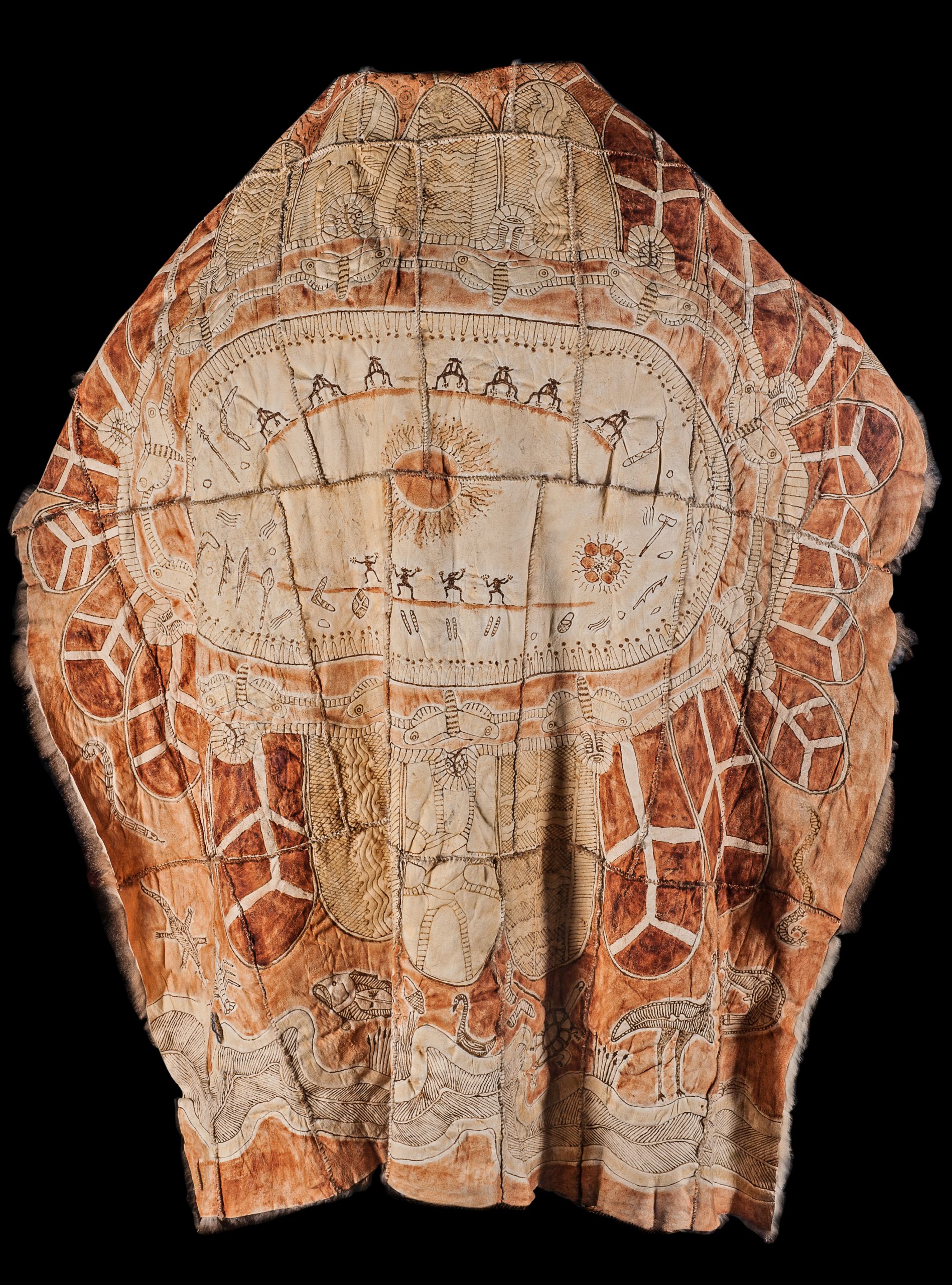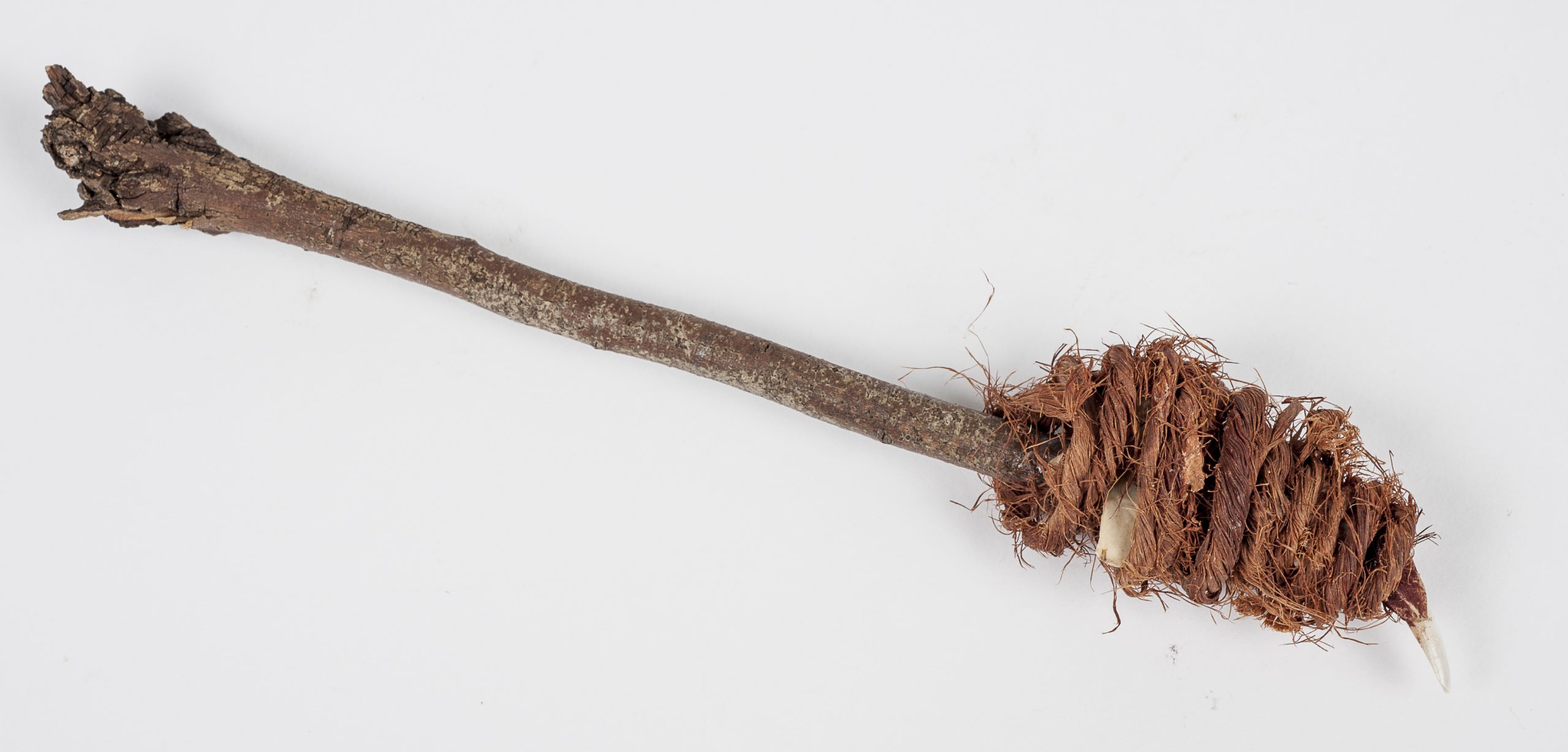A Living Tradition
Making a Possum Skin Cloak
Based on extensive research undertaken by Yorta Yorta artist Treahna Hamm, this contemporary possum skin cloak was crafted in 2007. The prominent incisor tooth from a possum’s lower jaw was used to etch the non-furry side of the skin with designs that represent the totem and personal markings of Aboriginal people, as well as the land or Country, including trade routes routinely used before the arrival of European in the late-eighteenth century.
Treahna’s cloak was worn by Ngambri-Ngunnawal Elder Matilda House at the opening of the Federal parliament on 13 February 2008, when the Prime Minister Kevin Rudd gave the National Apology to the nation’s Stolen Generations and their descendants. This was a landmark moment in the nation’s journey toward acknowledging the impact of colonisation on Australia’s indigenous people and cultures.
Historically, possum skin cloaks were worn by Aboriginal peoples belonging to Country located in the south-east of Australia. They were important commodities that had many uses, including as clothing and to line a mia-mia, a traditional shelter made from bark. Each cloak design represented stories and sites of significance to individual clans or families and was painted using ochre, sourced from the wearer’s tribal homeland. These cloaks, along with wooden shields and the Bogong moth, were important trading items in the Albury area, where the cloak was made and is displayed today.
When traditional methods were used to make a possum skin cloak the pelts were first obtained and stretched out flat onto bark, cured by smoke and left in the sun to dry, or cure. The skins were then rubbed with fat to keep them supple and cut to a regular shape before being stitched together, using sinew taken from the tail of the kangaroo. When worn as a cloak, they were typically fastened at the neck using a small piece of bone or wood.
Today’s ceremonial possum skin cloaks are made differently to the past. As possums are now a protected species the pelts from which they are made are imported from New Zealand. Instead of being tanned using traditional methods the pelts are chemically treated.






